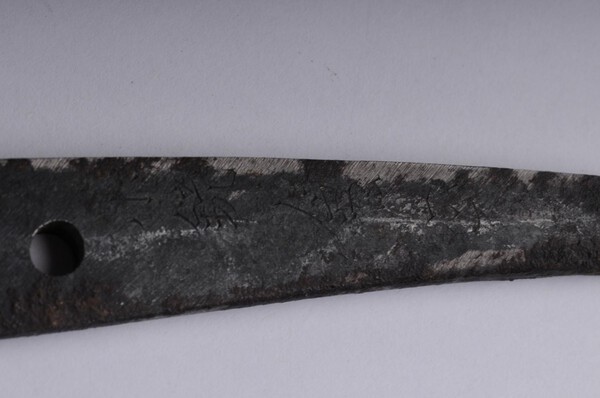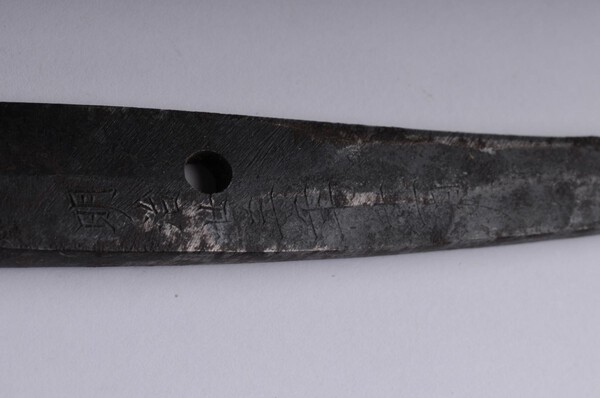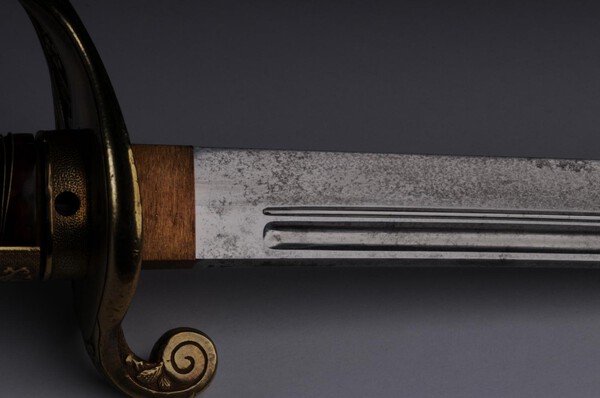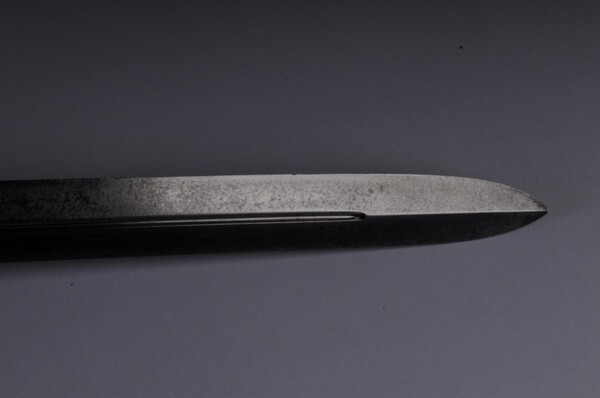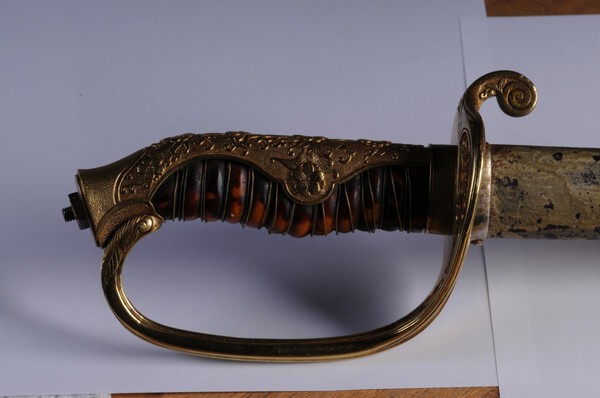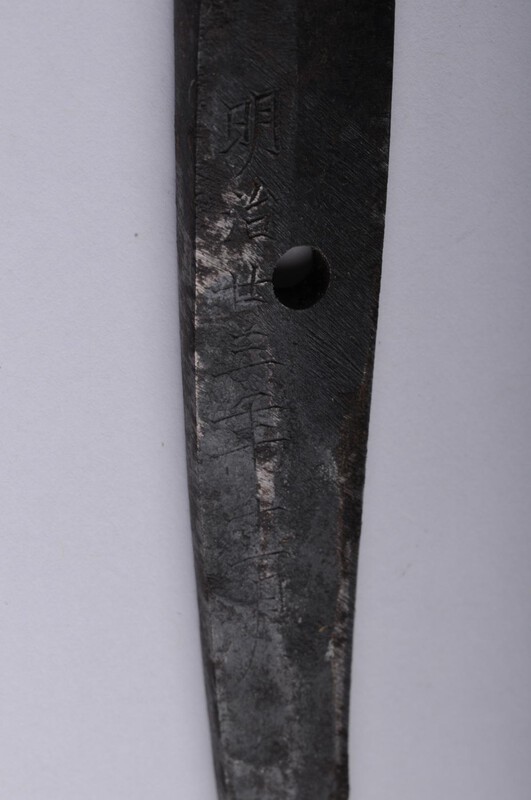
jct3602
Members-
Posts
171 -
Joined
-
Last visited
Everything posted by jct3602
-
Earliest Date On A Kogarasu Maru Blade?
jct3602 replied to jct3602's topic in Military Swords of Japan
Thanks Stephen for the info. I am probably going to be a cheapskate and pay the $10 or so for a Xerox of the page I need from the Library of Congress. If that fails, this source is probably the most convenient of the various I have seen. Primarily a collector of Koto; however, this piece looked interesting and the price was not bad, so even not being a militaria collector I picked it up. Once again, thanks john -
Earliest Date On A Kogarasu Maru Blade?
jct3602 replied to jct3602's topic in Military Swords of Japan
Mark, where do you find John Slough's Oshigata book? Would be very interested in seeing that particular Oshigata. The information that Ohmura-study/net gives does not indicate anything forged that early, but Murata was working with the best smith's of his time in his effort to produce appropriate officer's blade styles during that period, so it is certainly very reasonable to have a date that early. Great info, thanks John -
Earliest Date On A Kogarasu Maru Blade?
jct3602 replied to jct3602's topic in Military Swords of Japan
Johnny Barracuda, thank you. I have read Ohmura-san's articles with great interest. One interesting dodge is to take the http://Ohmura-study.net/ and switch the numbers that follow and hit enter; I find myself on pages I was not able to access asking questions on google. If you have an easier way of accessing all of the pages in Ohmura-study and/or a way to contact Ohmura himself, I would appreciate it. I have looked up where he worked, but an email to there just bounced. Thanks a lot; any more ideas would be greatly appreciated. -
Agreed, Paulb, but not really worried about the value. Except to scatter more money on my coffin when I kick off, it does not matter, since I have no close heirs and like the piece itself. However, your point is very well taken; the gimei may have occurred long after the blade and furniture were combined in a misguided effort to increase value. I understand that common knowledge is an age patina can not be accurately faked; however I know someone who has been deeply involved with nihonto and many other forms of Japanese and Chinese art for over 50 years who says he can create a patina that even he can not distinguish from a real long-aged patina. We had an 8 year project taking a broken blade and doing suriage on the front half and satsuma-age on the base and creating most of the furniture; since a new nakago had to be formed for the top piece, he offered to add an aged patina to the keisho filing he did, but I said to leave it as it was. Will include pictures of the project here at some point in another thread (need help in placing the hamon); getting a set of pics done today in fact. Thank you very much for your thoughtful input, john
-
Earliest Date On A Kogarasu Maru Blade?
jct3602 replied to jct3602's topic in Military Swords of Japan
-
Earliest Date On A Kogarasu Maru Blade?
jct3602 replied to jct3602's topic in Military Swords of Japan
-
-
Earliest Date On A Kogarasu Maru Blade?
jct3602 replied to jct3602's topic in Military Swords of Japan
Lance, supposedly the prototype of this style was around 1890; the other style officer's blade was first forged in 1891 I believe for an imperial prince. thanks for you interest john -
-
-
Found some pictures on an old DVD - the picture mei is out of focus, the rest of the pictures of furniture are ok, The blade itself was not of interest until the window was opened, so when I get it back I will photo it and post the pictures. Thanks all, john
-
Earliest Date On A Kogarasu Maru Blade?
jct3602 replied to jct3602's topic in Military Swords of Japan
Thanks Lance; I was looking for any info on the dates when the kyugunto in the Kogarasumaru style were first introduced. The prototype for the other style officers blade was made by Murata for a member of the Imperial family in late 1891, I believe. I am curious as to where my blade falls in the development time line. Will have pictures sometime of the opened area of the hamon when I get it back. Adding one more picture. Thank you all for your patience (I hate computers) john -
Earliest Date On A Kogarasu Maru Blade?
jct3602 replied to jct3602's topic in Military Swords of Japan
-
Earliest Date On A Kogarasu Maru Blade?
jct3602 replied to jct3602's topic in Military Swords of Japan
-
Earliest Date On A Kogarasu Maru Blade?
jct3602 replied to jct3602's topic in Military Swords of Japan
Hi all; this is from a very old source - a dvd that made when I first acquired this. Will send more in bits - most of the pictures are around 4 MB thanks, John -
Earliest Date On A Kogarasu Maru Blade?
jct3602 replied to jct3602's topic in Military Swords of Japan
Hamfish, I understand the desire for pictures; however, note the topic. Question was what is the earliest date that various posters have seen on this style blade? Am still dealing with getting pictures off a computer that blew up; looking around for some micro-sd cards that may have the pictures of the mei. Will be happy to post them at that point, but still looking for data on the early period of Murata-to; various sources have some conflicting opinions. -
Have a kogarasu maru blade with most of the fittings (tortoiseshell grip, D-guard from Suya, gold washed seppa and habaki, gold washed wire on the tortoiseshell, but missing the pommel cap). No armory number, signed Sho-Uju Kanemasa and dated Meiji 23 (October I think). Had a window opened on it and it has a real temper line, suguha with some very small midare, Does anyone have any info on the earliest date that a kogerasumaru blade would have? Thanks in advance, john /
-
Thanks Paul - as soon as I can find some pictures I will post them; the restorer has the blade right now and I am still trying to find what I can off my computer crash. Originally I thought the signature might be an 8th or 9th generation to make the blade contemporary with the furniture. What puzzles me is if it is gimei why would the faker not add the kiku if they were trying to increase value? Another question is whether the later generations of the Tanba school did any works with koshi no hiraita that approaches the crab claw look (to make the possibility of an authentic signature, just one of a smith not commonly seen). Thanks again John
-
Been having a boy's sword (or very small kodachi) restored over the last year. Originally purchased it for the furniture; the blade was a bonus, and at the time I was sure the signature was gimei. I still believe it is, but I am wondering why whoever did it bothered. The supposedly gimei signature is tanba no kami yoshimichi, with no kikumon. that signature does not resemble any I have found from the various lines of smiths that used it. What is curious was recently I had a window opened by a very knowledgeable friend (but not a polisher); it looks like Sue-Bizen, with koshi-no-hiraita and no trace of sudare-ba. The mounts are excellent; signed tsuba and signed fuchi-kashira, each from makers with typical auction prices of comparable pieces of around $700 -$900. Menuki are very nice, 5 leaf design. Habaki is silver in a rain pattern; gold washed seppa and gold inlaid in a pattern into the metal on the sides of the opening for the sageo. My restorer friend does lacquering repair for a prominent museum on occasion and says the lacquer is absolutely top notch. Am still in the process of trying to find a kozuka to match the rest, since that was removed before I found it. The blade has a very nice koshizori tachi shape, and is well proportioned, but very small. If this piece is Sue Bizen, why would someone put a gimei signature from a smith line hundreds of years younger? Even if they did, why not go full bore and toss the kiku in?. The Diamyo that commissioned the piece was obviously quite wealthy; was the prestige of the Tanba no kami Yoshimichi line of smiths so great in the 1720-1800 period (from the period of the tsuba and fuchi-kashira) that a gimei was warranted? My old computer blew up about a month ago; when I salvage the pictures I will post the furniture, signatures, and the blade. will see if I can get a good picture of the hamon at some point. Anyway, just wondering about why someone might put a fake signature on a piece that might basically be better than that of the gimei signature. thanks

